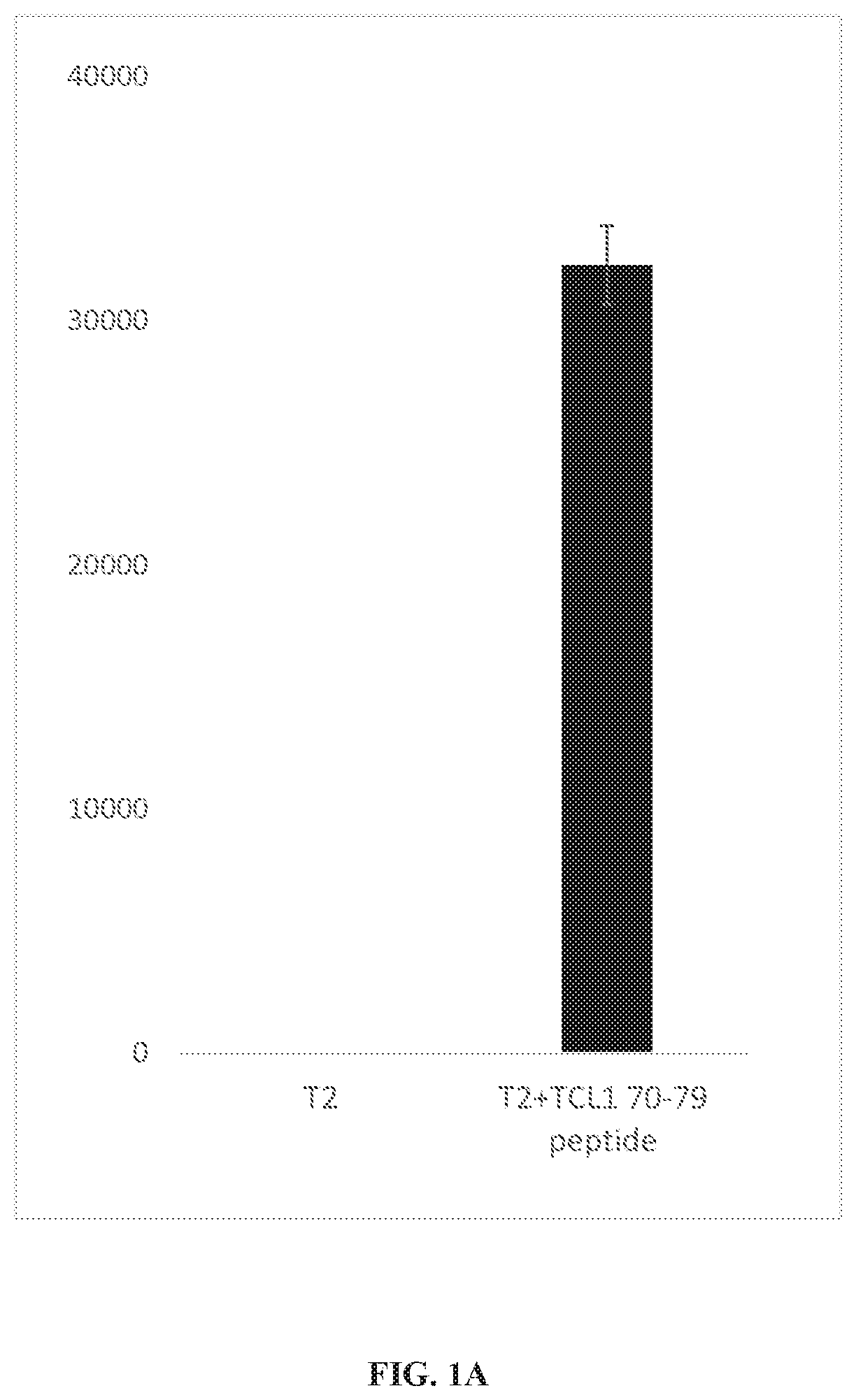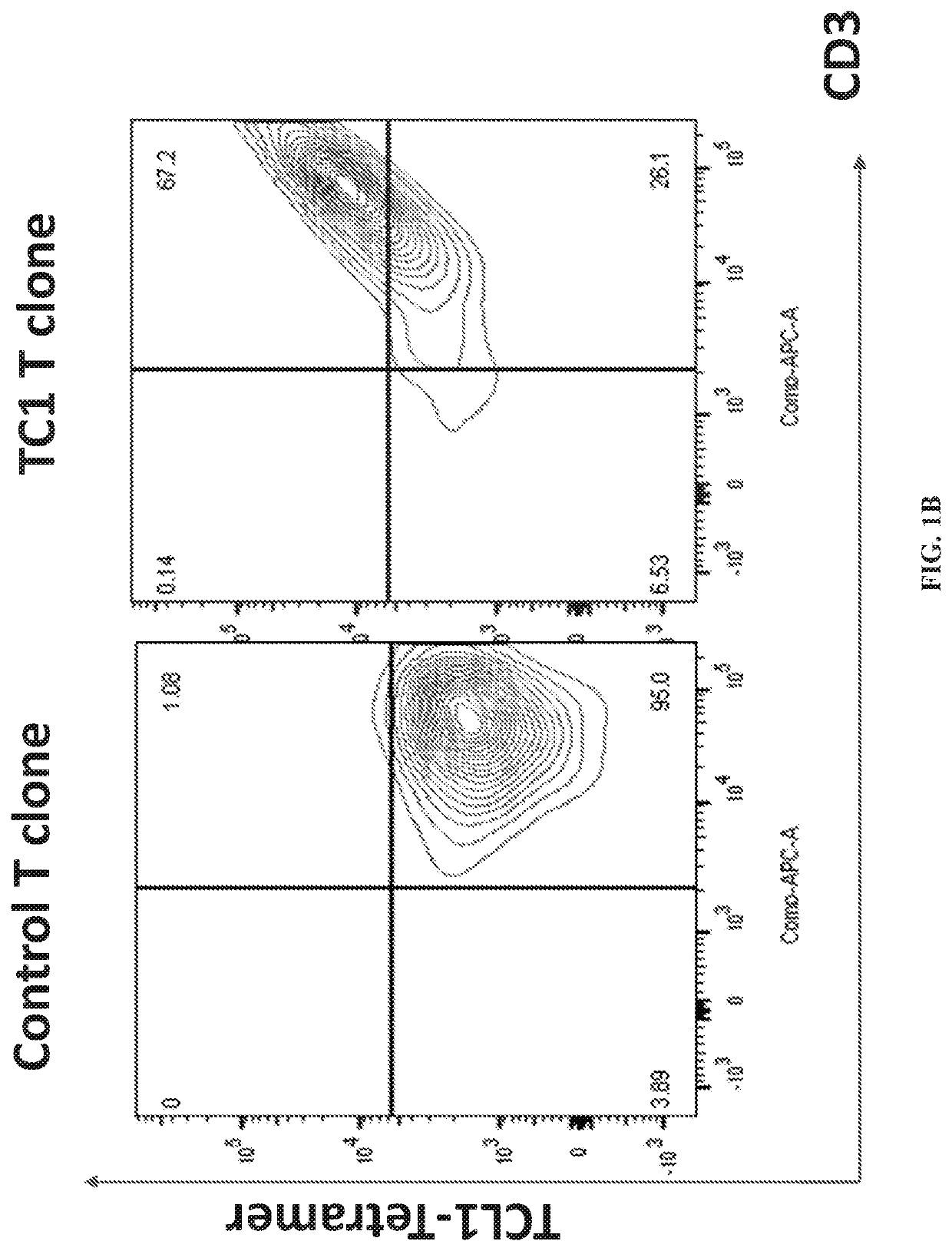T cell receptors for immunotherapy
a technology of immunotherapy and receptors, applied in the field of immunology and medicine, can solve the problems of serious clinical problems, relapse after immunotherapy or chemotherapy, and remain significant clinical problems, and achieve the effect of facilitating the expression of a recombinant tcr
- Summary
- Abstract
- Description
- Claims
- Application Information
AI Technical Summary
Benefits of technology
Problems solved by technology
Method used
Image
Examples
example 1
Materials and Methods
Patient Samples
[0240]The Institutional Review Board of The University of Texas M. D. Anderson Cancer Center approved the study. An informed consent was obtained in accordance with the Declaration of Helsinki prior to collection of patient samples. Peripheral blood mononuclear cells (PBMC) were isolated from blood samples by density gradient separation. Tissue samples were processed into single-cell suspension and cryopreserved in aliquots.
Cell Lines
[0241]MCL cell lines, Mino and Jeko-1; Burkitt's lymphoma cell line, Daudi; non-hematological tumor cell line, HCT-15, SW480, SW620, and T2 hybridoma cells were cultured in RPMI 1640 medium supplemented with 10% fetal bovine serum, 10 mM HEPES, 1× Glutamax, 50 μM β-mercaptoethanol, 1 mM sodium pyruvate, 100 U / mL penicillin+100 μg / mL streptomycin, and 10 μg / mL gentamicin (all from Invitrogen, Carlsbad, Calif.) at 37° C. and 5% CO2 in air.
Tumor and Immune Cell Subset Isolation
[0242]Primary lymphoma cells, normal peri
example 2
TCL1-Specific T-Cell Receptor Redirects T Cells Against B Cell Lymphoma and Non-Hematological Tumor Cells
[0251]To further explore the potential of TCL1 T-cell epitope as a therapeutic target for clinical immunotherapy, the above TCR was transduced into the HLA A2+ normal donors' PBMCs by lentivirus. It was observed that the TCR-transduced T cells specifically recognized TCL1 peptide-pulsed T2 cells at high avidity (1-10 nM) and lyse the HLA-A2+, TCL1-expressing B-cell lymphoma cell lines and primary lymphoma cells, but not normal B cells. Adoptive transfer of TCR-transduced T cells inhibited the growth of lymphoma cells in vivo and significantly extended the survival of mice. In addition, it was observed that TCL1 is expressed in the human embryonic stem cells and multiple types of solid tumor cells. TCL1-specific TCR-transduced T cells can recognize these solid tumor cells but not control tumor cells. These results suggest that TCL1-derived peptides are expressed in the context of HLA
PUM
| Property | Measurement | Unit |
|---|---|---|
| Fraction | aaaaa | aaaaa |
| Fraction | aaaaa | aaaaa |
| Antigenicity | aaaaa | aaaaa |
Abstract
Description
Claims
Application Information
 Login to view more
Login to view more - R&D Engineer
- R&D Manager
- IP Professional
- Industry Leading Data Capabilities
- Powerful AI technology
- Patent DNA Extraction
Browse by: Latest US Patents, China's latest patents, Technical Efficacy Thesaurus, Application Domain, Technology Topic.
© 2024 PatSnap. All rights reserved.Legal|Privacy policy|Modern Slavery Act Transparency Statement|Sitemap



